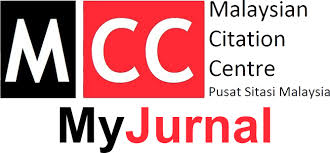Detection of multidrug resistant Vibrio parahaemolyticus and anti-Vibrio Streptomyces sp. MUM 178J
DOI:
https://doi.org/10.36877/pmmb.a0000347Abstract
The growing global population has increased the demand for seafood, making the aquaculture industry a vital food source. However, climate change has negatively impacted the industry as natural inhabitants of aquatic environments such as Vibrio parahaemolyticus are thriving in the warming waters. These foodborne pathogens can cause disease in marine animals, resulting in lowered production rates and substantial economic losses. V. parahaemolyticus is transmitted from these marine animals in aquaculture to humans via raw or undercooked seafood, resulting in gastroenteritis outbreaks. In addition, the extensive use of antibiotics in aquaculture to treat infections within marine animals has led to the development of multidrug-resistant (MDR) V. parahaemolyticus, which threatens the effectiveness of antimicrobial treatments. Thus, it is vital to explore the alternatives of antibiotics in aquaculture to manage the spread of antibiotic resistance. This study aimed to investigate the prevalence of MDR V. parahaemolyticus to provide insight into the current antibiotic resistance patterns of this pathogen and to determine potential anti-Vibrio properties of Streptomyces MUM 178J which was previously isolated from the soils of a mangrove forest in Sarawak, Malaysia. Colony morphology and toxR-assay indicated that all samples tested positive for V. parahaemolyticus. Further identification with genomic analyses confirmed that 64% (64/100) of the isolates were V. parahaemolyticus. The multiple antibiotic resistance index (MAR) of the isolates ranged between 0.07 and 0.57, with 81% (52/64) of the isolates resistant to more than one antibiotic. The isolates were most resistant to ampicillin (98.4%), followed by ceftazidime (53.1%). In contrast, the isolates were highly susceptible to nalidixic acid (98.4%), tetracycline (93.8%), and sulfamethoxazole/trimethoprim (90.6%). They also demonstrated susceptibilities of 89.1% to levofloxacin, oxytetracycline, and gentamicin. Streptomyces sp. MUM 178J exhibited antagonistic effects on select V. parahaemolyticus strain, RP0132, with a minimum inhibitory concentration of 12.5 mg/mL and a minimum bactericidal concentration of 50 mg/mL.
Downloads
Published
How to Cite
Issue
Section
License
Copyright (c) 2023 Ke-Yan Loo, Loh Teng-Hern Tan, Jodi Woan-Fei Law, Priyia Pusparajah, Learn-Han Lee, Vengadesh Letchumanan

This work is licensed under a Creative Commons Attribution-NonCommercial 4.0 International License.
Author(s) shall retain the copyright of their work and grant the Journal/Publisher right for the first publication with the work simultaneously licensed under:
Creative Commons Attribution-NonCommercial 4.0 International (CC BY-NC 4.0). This license allows for the copying, distribution and transmission of the work, provided the correct attribution of the original creator is stated. Adaptation and remixing are also permitted.

This broad license intends to facilitate free access to, as well as the unrestricted reuse of, original works of all types for non-commercial purposes.
The author(s) permits HH Publisher to publish this article that has not been submitted elsewhere.




.png)

.jpg)
